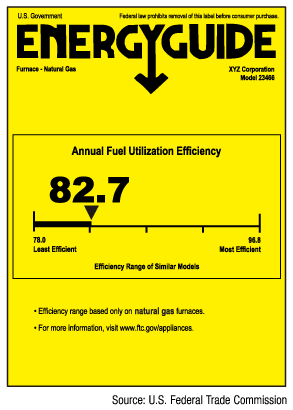I actually went an unusual route. We have radiant slab in our walkout basement (with 2 bedrooms, bath, laundry/utility and family room) and hot water baseboard on the main floor (great room and master bedroom suite).
"Furnaces" were hugely expensive so I went with an on-demand hot water heater that powers the radiant heat, the hot water baseboard and provides for our domestic hot water. We got a Takagi but my plumbing guy says they are using something different/better in new installs. The on-demand hot water heater cost about 20% of what a furnace would have cost (~$1,800 IIRC) so I'm figuring that even if it doesn't last as long as a furnace and I have to buy 3 or 4 in the same timespan that a furnace would last that I am ahead of the game. A calculated risk on my part.
LBYM solution that has worked well for us for 3 seasons and still going strong.
 Thanks
Thanks Thanks
Thanks

 My heating gas cost ave's ~$80/mo during 8mo we typically use the furnace. Going to 95% eff would likely save ~19% in gas cost, or $15/mo (x8= ~$120/yr at current gas price). Payback time for moving up to 95% (depending on assumptions) would be ~12yrs. But from all that I've read this does NOT inc electricity cost of running the furnace motor, and exact same furnace models from same make can have same gas eff rating (80 or 95%) with either traditional motor or newer ECM motor. Both US & Canadian gov sites claim ECM (variable spd) saves electricity during both heating & AC use, but question is how much in real life?
My heating gas cost ave's ~$80/mo during 8mo we typically use the furnace. Going to 95% eff would likely save ~19% in gas cost, or $15/mo (x8= ~$120/yr at current gas price). Payback time for moving up to 95% (depending on assumptions) would be ~12yrs. But from all that I've read this does NOT inc electricity cost of running the furnace motor, and exact same furnace models from same make can have same gas eff rating (80 or 95%) with either traditional motor or newer ECM motor. Both US & Canadian gov sites claim ECM (variable spd) saves electricity during both heating & AC use, but question is how much in real life?